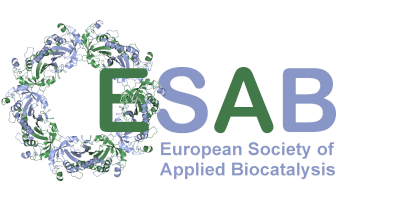Standardization of genetic tools: The SEVA platform
Abstract
Unlocking the full potential of Synthetic Biology demands a diverse collection of genetic tools capable of executing a broad range of operations, and in this endeavor, the Standard European Vector Architecture (SEVA) database stands out as an important resource. The SEVA database serves as a comprehensive repository of genetic tools to deploy complex phenotypes in microorganism with robust precision. The SEVA platform is both a web-based resource (https://seva-plasmids.com) and a physical repository of plasmids, designed to facilitate the storage and retrieval of standardized vectors. SEVA plasmids share a common and standardized layout consisting of six functional modules, three variables (selection marker, origin of replication, and cargo) and three fixed (two transcriptional terminators and an origin of transfer). While the fixed modules compose the plasmid backbone, the variable ones confer distinct functionalities to plasmids. The SEVA format involves the adoption of four rules for the physical assembly of the components and also a specific and fixed nomenclature system for naming the corresponding plasmid constructs. These rules involve minimizing DNA sequences, curating segments of common restriction sites, flanking modules with fixed restriction sites, and embracing an Open Access policy. The designed scaffold enables the easy exchangeability of modules expanding genome engineering possibilities for microorganisms beyond typical laboratory strains. Over the past eleven years, the SEVA platform has distributed more than 4200 plasmids to 45 countries and has recently been upgraded to its 4.0 version, enriching the collection with more plasmids, shuttle vectors, new utilities and also a system nomenclature update. In essence, the SEVA database contributes to the global progress of Synthetic Biology by providing freely accessible standardized vectors to users worldwide.
About the Speaker(s)
 Esteban Martínez García is a scientist based at Centro Nacional de Biotecnología (CSIC), where he focuses on Synthetic Biology and its diverse microbial applications. He earned his Ph.D. from Complutense University of Madrid (2001) specializing in bacterial genetics. Then, for a short period of time he joined Julián Perera´s lab to work on bacterial biodegradation. Afterwards, he undertook a Postdoctoral position with Roberto Kolter at Harvard Medical School to work in comparative genomics of Pseudo-monas aeruginosa. Later, he moved to Kevin Foster´s lab at Harvard University, where he studied the molecular responses associated with the social interactions of different strains of Pseudomonas aeruginosa. After that, he returned to Spain joining Victor de Lorenzo´s lab at CNB (CSIC) to explore the applications of Synthetic Biology in environmental microbiology. In that time, I work to develop and maintain the SEVA platform (http://seva-plasmids.com), a standardized and modular collection of plasmids to perform different genetic operations in Gram-negative bacteria.
Esteban Martínez García is a scientist based at Centro Nacional de Biotecnología (CSIC), where he focuses on Synthetic Biology and its diverse microbial applications. He earned his Ph.D. from Complutense University of Madrid (2001) specializing in bacterial genetics. Then, for a short period of time he joined Julián Perera´s lab to work on bacterial biodegradation. Afterwards, he undertook a Postdoctoral position with Roberto Kolter at Harvard Medical School to work in comparative genomics of Pseudo-monas aeruginosa. Later, he moved to Kevin Foster´s lab at Harvard University, where he studied the molecular responses associated with the social interactions of different strains of Pseudomonas aeruginosa. After that, he returned to Spain joining Victor de Lorenzo´s lab at CNB (CSIC) to explore the applications of Synthetic Biology in environmental microbiology. In that time, I work to develop and maintain the SEVA platform (http://seva-plasmids.com), a standardized and modular collection of plasmids to perform different genetic operations in Gram-negative bacteria.
